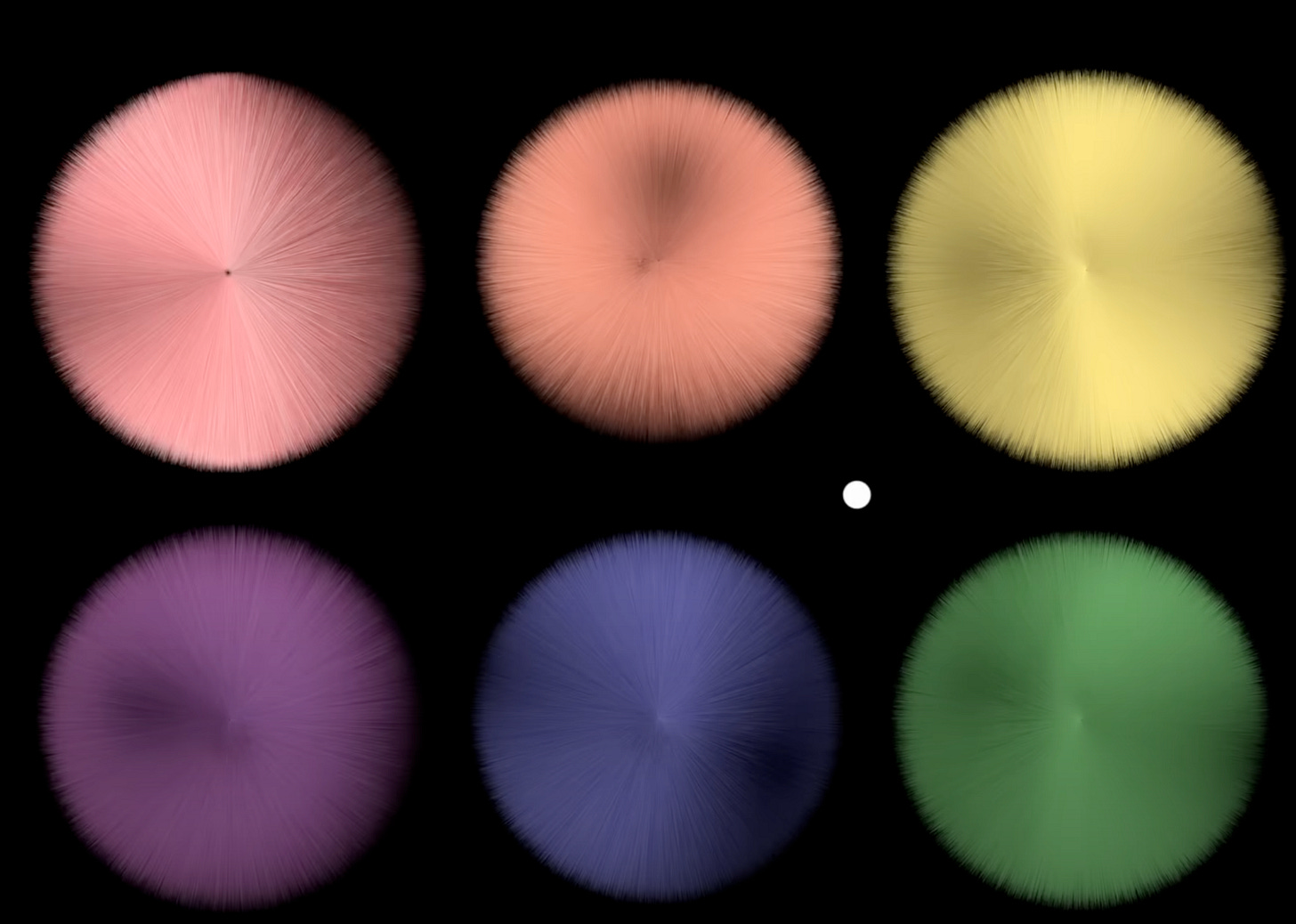This week, my friend Elliot solved the most upvoted set theory problem on Math Stack Exchange.
Currently, he works on the leading math benchmarks to test the limits of AI.
Here’s some sample problems.
FrontierMath is a benchmark for evaluating advanced mathematical reasoning in AI and leaps and bounds ahead other math benchmarks.
If you want to learn more, email elliot@epoch.ai
Let’s jump into Elliot’s favorite underrated paradoxes…
Grim Reaper paradox
There is an infinite sequence of Grim Reapers set to kill you if another Reaper has not killed you already
It is 12pm, the first Reaper is set to kill you at 1pm. The second Reaper is set to kill you at 12:30pm, the third at 12:15pm, and so on ad infinitum.
Given these circumstances:
It is impossible that you survive
But also impossible that any Reaper kills you. Why?
Does the first Reaper kill you? No.
Does the second Reaper kill you? No.
Does the third Reaper kill you? No.
… so does the nth Reaper kill you? No.
Berry paradox
“The smallest positive integer not definable in under sixty letters” (57 letters) is a self-referential paradox.
The point is that even the biggest numbers that we can think of can be defined in under 60 letters.
Ten to the ten thousand (19 letters)
Googolplex (10 letters)
This is 10^googol (1010,000,000,000,000,000,000,000,000,000,000,000,000,000,000,000,000,000,000,000,000,000,000,000,000,000,000,000,000,000,000,000,000,000)
A googolplex has more digits than atoms in the universe
Graham's number (13 letters)
TREE(3) (Tree of three is 11 letters)
I wondered, what about a googolplex of googolplexes (24 letters)?
Well, there is a finite number of phrases that we can generate from 60 letters, but infinitely many numbers.
So there must be a number that can’t be defined by a phrase under 60 letters, and what’s the first one of these?
“The smallest positive integer not definable in under sixty letters” (57 letters)

Banach–Tarski paradox
I’ll let VSauce explain this one—
TLDR: You can take a pea (a small sphere) and cut it into as few as 5 pieces, reassemble it to make the sun (a bigger sphere) or 2 spheres. 🤯
The basic principle is that when you travel on sphere, because of its curvature, when you travel a specific length across the sphere (Right → Up → Left → Down), you’ll never return to the same spot you started at.
Thomson's lamp
You turn on a lamp that has a on/off switch
At one minute, you turn it off
After another 30 seconds, you flip it on again
After another 15 seconds, you flip it off again
And so on… you continuously flip the switch after waiting exactly half the time you waited before.
The infinite sum of this series is 2 minutes.
At the end of the 2 minutes, is the lamp on or off?
(Un?)fortunately, it’s a divergent infinite series, so that’s your answer.
This is a fun inverse paradox of the Grim Reaper one, no?
I asked Elliot for a few non-infinity paradoxes
Birthday problem
In any room, the minimum number of people you need in a room for there to be a >50% chance that two people share a birthday is 23.
Simpson’s paradox
There’s a trend within specific groups of data but that trend disappears or reverses when the data is combined.
I see why Elliot likes the infinite paradoxes more…
What do you think?
Bonus: Shape rotator question
My friend Mehran first asked me this question:
If you take a cube and place it balanced perfectly balanced on a point, and start making infinitely thin slices of 2D planes, what is the sequence of 2D shapes you get as you slice from top to bottom?














If you are interested in what philosophers have said about these and the most popular resolutions, Michael Huemer's textbook about the philosophy of paradoxes was a fun read: https://www.amazon.com/Paradox-Lost-Logical-Solutions-Philosophy/dp/3319904892. From what I've read, I agree with him that the solution to the 'supertasks' puzzles is that they imply the existence of an infinite intensive magnitude, which are logically impossible (e.g. infinite energy-density, mass, force, etc., in a finite space).